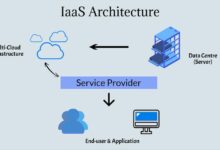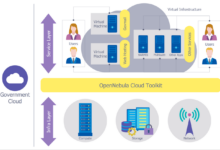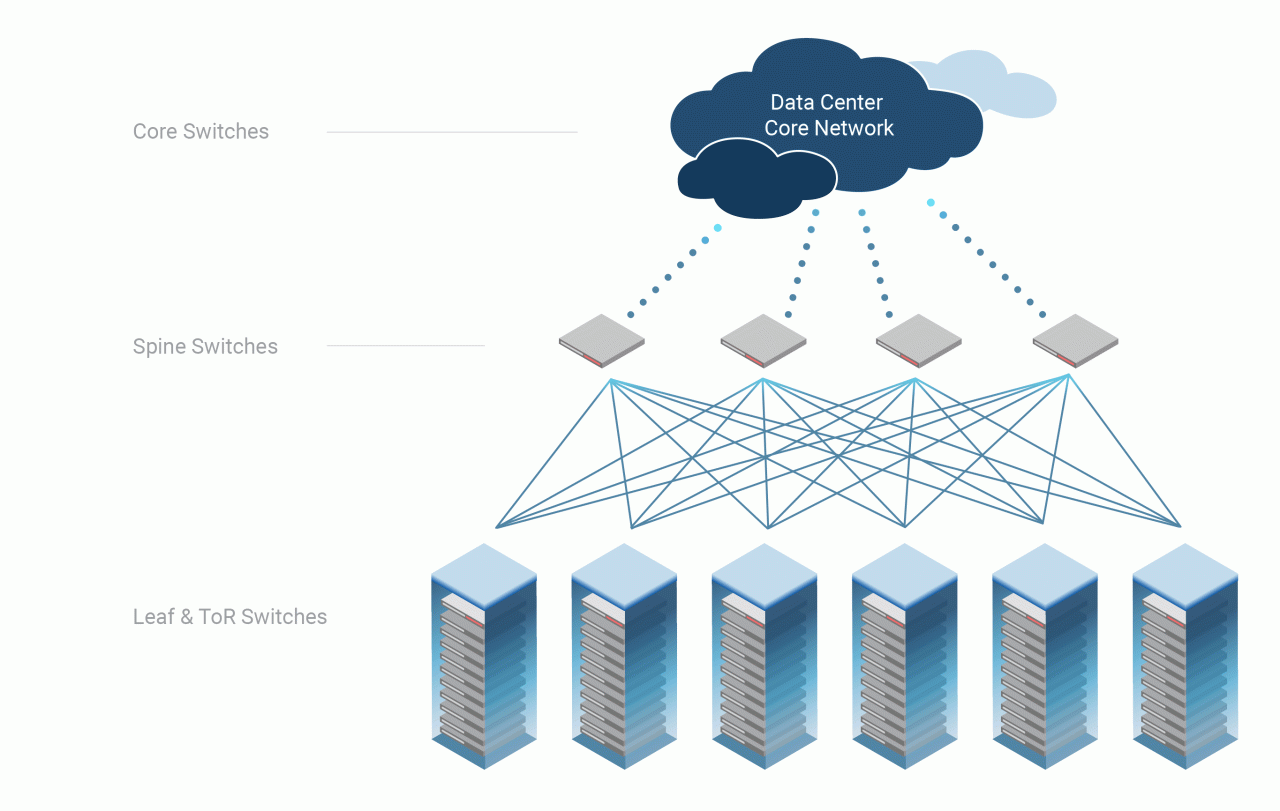Cloud Networking Integration Services: Seamlessly Connecting Your Networks
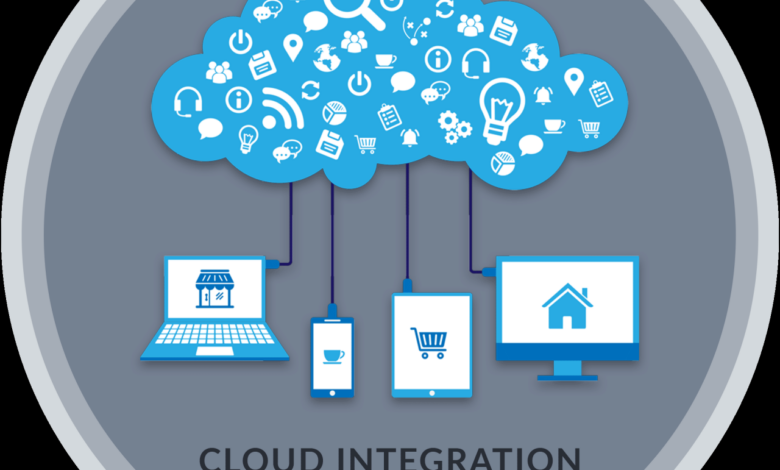
Cloud networking integration services offer a transformative solution for businesses seeking to optimize their network infrastructure, enhance security, and drive scalability. By seamlessly integrating cloud-based networking capabilities with existing systems, organizations can unlock a world of possibilities, empowering them to meet the demands of the modern digital landscape.
As the digital realm continues to expand, the need for robust and adaptable network solutions has become paramount. Cloud networking integration services provide a comprehensive approach to network management, enabling businesses to leverage the power of the cloud to achieve unparalleled connectivity, efficiency, and security.
Cloud Networking Integration Services Overview

Cloud networking integration services are designed to help businesses connect their on-premises networks to the cloud. This can be done through a variety of methods, including virtual private networks (VPNs), software-defined networking (SDN), and cloud-based firewalls.
There are many benefits to using cloud networking integration services. These benefits include:
- Improved security: Cloud networking integration services can help businesses improve the security of their networks by providing a secure connection between their on-premises networks and the cloud.
- Increased flexibility: Cloud networking integration services can help businesses increase the flexibility of their networks by allowing them to connect to the cloud from anywhere.
- Reduced costs: Cloud networking integration services can help businesses reduce the costs of their networks by eliminating the need for expensive hardware and software.
There are a variety of different cloud networking integration services available. These services include:
- Virtual private networks (VPNs): VPNs are a type of cloud networking integration service that allows businesses to create a secure connection between their on-premises networks and the cloud.
- Software-defined networking (SDN): SDN is a type of cloud networking integration service that allows businesses to manage their networks through software, rather than through hardware.
- Cloud-based firewalls: Cloud-based firewalls are a type of cloud networking integration service that helps businesses protect their networks from unauthorized access.
Cloud networking integration services can be used in a variety of real-world scenarios. These scenarios include:
- Connecting on-premises networks to the cloud: Cloud networking integration services can be used to connect on-premises networks to the cloud, allowing businesses to access cloud-based applications and services.
- Creating secure connections between different cloud environments: Cloud networking integration services can be used to create secure connections between different cloud environments, allowing businesses to move data and applications between clouds.
- Protecting networks from unauthorized access: Cloud networking integration services can be used to protect networks from unauthorized access, helping businesses to keep their data and applications safe.
Benefits of Cloud Networking Integration Services
Cloud networking integration services offer a plethora of advantages that can revolutionize your business operations.Integrating your network with cloud services not only streamlines your infrastructure but also unlocks significant cost savings and efficiency gains. By eliminating the need for on-premises hardware and maintenance, you can reduce capital and operational expenses, freeing up resources for other strategic initiatives.Furthermore,
cloud networking integration enhances security and reliability. Cloud providers employ robust security measures and advanced threat detection systems, ensuring the protection of your sensitive data and applications. The distributed nature of cloud networks also provides redundancy and fault tolerance, minimizing the risk of downtime and ensuring uninterrupted business operations.Lastly,
cloud networking integration empowers businesses to scale their operations with ease. The scalability of cloud services allows you to quickly adapt to changing business needs, seamlessly adding or removing resources as required. This flexibility enables you to respond to market demands, seize growth opportunities, and stay competitive in a dynamic business landscape.
Cost Savings and Efficiency
Cloud networking integration services eliminate the need for expensive on-premises hardware, such as routers, switches, and firewalls. This can result in significant cost savings, especially for businesses with complex or distributed networks.Moreover, cloud networking integration can streamline network management, reducing the time and resources required for maintenance and troubleshooting.
Automated provisioning and configuration tools simplify network management tasks, freeing up IT staff to focus on more strategic initiatives.
Improved Security and Reliability
Cloud providers implement stringent security measures and employ advanced threat detection systems to protect your data and applications from unauthorized access and cyber threats.Additionally, cloud networks are designed with redundancy and fault tolerance, ensuring high availability and minimizing the risk of downtime.
This ensures that your critical business applications remain accessible and operational, even in the event of hardware failures or network outages.
Scalability and Flexibility
Cloud networking integration services offer unparalleled scalability, allowing you to quickly and easily adapt your network to changing business needs. You can seamlessly add or remove resources as required, without the need for lengthy procurement and deployment processes.This flexibility empowers you to respond to market demands, seize growth opportunities, and stay competitive in a dynamic business landscape.
Challenges of Cloud Networking Integration Services
Implementing cloud networking integration services comes with a unique set of challenges that need to be carefully addressed to ensure a successful and secure integration.
One of the primary challenges lies in the complexity of cloud networking environments. Cloud networks are often highly distributed and involve multiple cloud providers, making it difficult to manage and secure the network infrastructure.
Security Risks
Cloud networking integration also introduces a range of security risks that need to be mitigated. These risks include:
- Data breaches:Cloud networks can be a target for data breaches, as they contain sensitive data that can be accessed by unauthorized individuals.
- Unauthorized access:Unauthorized users may gain access to cloud networks and resources, leading to data theft or disruption of services.
- Denial of service attacks:Cloud networks can be subject to denial of service attacks, which can disrupt access to cloud resources and applications.
Overcoming Challenges
To overcome these challenges, organizations can implement a range of measures, such as:
- Encryption:Encrypting data in transit and at rest helps protect it from unauthorized access.
- Firewalls:Implementing firewalls helps control access to cloud networks and resources.
- Network traffic monitoring:Monitoring network traffic helps identify and mitigate security threats.
By implementing these measures, organizations can significantly reduce the risks associated with cloud networking integration.
Real-World Case Studies
Several real-world case studies demonstrate the successful implementation of cloud networking integration services. For example, Netflix uses cloud networking integration to deliver its streaming services to over 200 million subscribers worldwide. Netflix has implemented a highly scalable and secure cloud networking infrastructure that enables it to deliver high-quality video streaming to its users.
Benefits and Challenges Summary
The following table summarizes the benefits and challenges of cloud networking integration services:
| Benefits | Challenges |
|---|---|
| Improved scalability | Complexity of cloud networking environments |
| Reduced costs | Security risks |
| Increased flexibility | Data management |
| Improved security | Compliance |
The Future of Cloud Networking Integration Services
Cloud networking integration services are expected to continue to grow in popularity in the coming years. As more organizations adopt cloud computing, the need for robust and secure cloud networking solutions will increase. Cloud networking integration services will play a key role in enabling organizations to take advantage of the benefits of cloud computing while mitigating the associated risks.
Best Practices for Cloud Networking Integration Services
Integrating cloud networking services requires careful planning and execution to ensure a successful outcome. Here are some best practices to consider:
Defining clear goals and objectives:
- Start by defining your specific business goals for cloud networking integration.
- Identify the desired outcomes, such as improved performance, reduced costs, or increased agility.
- Establish clear metrics to measure the success of your integration efforts.
Identifying the right cloud networking services:
- Evaluate different cloud networking services based on your specific requirements.
- Consider factors such as performance, security, reliability, and cost.
- Choose services that align with your business goals and technical capabilities.
Architecting a secure and reliable network
- Design a network architecture that meets your security and reliability requirements.
- Implement industry-standard security measures, such as firewalls, intrusion detection systems, and encryption.
- Ensure network redundancy to minimize downtime in case of outages.
Migrating applications and data to the cloud
- Plan a migration strategy that minimizes disruption to your business operations.
- Use tools and techniques to automate the migration process as much as possible.
- Test and validate your migrated applications and data before cutover.
Managing and monitoring the cloud network
- Establish a comprehensive monitoring system to track network performance and identify potential issues.
- Set up alerts to notify you of any anomalies or performance degradations.
- Regularly review network logs and reports to identify trends and areas for improvement.
Optimizing the performance of cloud networking integration services:
- Use high-performance networking hardware to ensure optimal data transfer speeds.
- Configure the network for optimal performance, including routing protocols and traffic shaping.
- Monitor network performance metrics and make adjustments as needed to improve performance.
The importance of monitoring and managing cloud networking integration services:
- Establishing performance metrics:
- Define key performance indicators (KPIs) to measure the effectiveness of your cloud networking integration.
- Monitor the network for performance issues:
- Use monitoring tools to identify and troubleshoot performance issues promptly.
- Managing the network to ensure security and reliability:
- Implement security measures to protect the network from unauthorized access and threats.
- Ensure network reliability by implementing redundancy and disaster recovery plans.
- Providing documentation and training for network management:
- Create comprehensive documentation for the network architecture, configuration, and management procedures.
- Provide training to network administrators to ensure they have the skills to manage the network effectively.
Case Studies of Cloud Networking Integration Services
Businesses across various industries have leveraged cloud networking integration services to enhance their operations. Let’s explore a few notable case studies:
Case Study: Healthcare
A leading healthcare provider faced challenges in managing its vast network infrastructure, which spanned multiple data centers and remote locations. By implementing cloud networking integration services, they achieved:
- Centralized network management, simplifying operations and reducing costs.
- Improved network performance, enhancing patient care and staff productivity.
- Increased network security, protecting sensitive patient data.
Case Study: Retail
A global retailer sought to optimize its network infrastructure to support its expanding e-commerce operations. With cloud networking integration services, they realized:
- Enhanced network scalability, accommodating rapid growth in online traffic.
- Improved customer experience, reducing website load times and increasing sales.
- Cost savings through optimized bandwidth usage and reduced hardware maintenance.
Case Study: Manufacturing
A manufacturing company needed to connect its geographically dispersed factories to its central headquarters. Cloud networking integration services enabled:
- Secure and reliable network connectivity between all locations.
- Real-time data sharing and collaboration, improving production efficiency.
- Reduced network downtime, minimizing disruptions and maximizing productivity.
These case studies demonstrate the transformative impact of cloud networking integration services in addressing business challenges and driving success. By leveraging these services, organizations can optimize their network infrastructure, enhance performance, reduce costs, and gain a competitive advantage.
Future of Cloud Networking Integration Services
Cloud networking integration services are rapidly evolving, and the future holds even more exciting possibilities. As businesses increasingly adopt cloud-based applications and services, the need for seamless and secure networking solutions will only grow.
Key Trends Shaping the Future of Cloud Networking Integration Services
Several key trends are shaping the future of cloud networking integration services:
- Increased adoption of cloud-native applications:Cloud-native applications are designed to run in the cloud and take advantage of its scalability, flexibility, and cost-effectiveness. As more businesses adopt cloud-native applications, the demand for cloud networking integration services will increase.
- Growing importance of security:Security is a top concern for businesses of all sizes. As cloud networking integration services become more prevalent, businesses will need to ensure that their networks are secure from cyber threats.
- Need for greater flexibility and agility:Businesses need to be able to quickly and easily adapt their networks to changing business needs. Cloud networking integration services can provide the flexibility and agility that businesses need.
How Cloud Networking Integration Services Will Evolve in the Coming Years
In the coming years, cloud networking integration services will evolve in several ways:
- Increased use of artificial intelligence (AI):AI will be used to automate many tasks associated with cloud networking integration, such as network design, configuration, and management.
- Greater integration with other cloud services:Cloud networking integration services will become more closely integrated with other cloud services, such as cloud storage, cloud compute, and cloud security.
- Development of new cloud networking technologies:New cloud networking technologies, such as software-defined networking (SDN) and network function virtualization (NFV), will be developed to improve the performance, scalability, and security of cloud networks.
Potential Impact of Cloud Networking Integration Services on Businesses
Cloud networking integration services have the potential to transform businesses in several ways:
- Improved network performance:Cloud networking integration services can improve network performance by reducing latency, increasing bandwidth, and improving reliability.
- Reduced costs:Cloud networking integration services can help businesses reduce costs by eliminating the need for expensive hardware and software.
- Increased agility:Cloud networking integration services can help businesses increase agility by making it easier to quickly and easily adapt their networks to changing business needs.
- Enhanced security:Cloud networking integration services can help businesses enhance security by providing access to advanced security features, such as firewalls, intrusion detection systems, and DDoS protection.
Step-by-Step Guide to Implementing Cloud Networking Integration Services
Integrating cloud networking services into your IT infrastructure requires careful planning and execution. Follow this comprehensive guide to navigate the process seamlessly.
Assessment and Planning
- Define your business goals and objectives for cloud networking integration.
- Assess your current network infrastructure and identify areas for improvement.
- Research and select a cloud networking provider that aligns with your requirements.
Design and Architecture
- Design a hybrid network architecture that integrates on-premises and cloud resources.
- Determine the appropriate network topology, routing protocols, and security measures.
- Develop a comprehensive implementation plan that Artikels the steps, timelines, and responsibilities.
Implementation
- Provision cloud networking services and establish connectivity between on-premises and cloud environments.
- Configure network devices, such as routers, switches, and firewalls, to support the hybrid network.
- Implement security measures to protect the network from unauthorized access and threats.
Testing and Validation
- Conduct thorough testing to verify the functionality and performance of the integrated network.
- Validate the network’s ability to meet the defined business goals and objectives.
- Identify and resolve any issues or bottlenecks.
Monitoring and Maintenance
- Establish a comprehensive monitoring system to track network performance and identify potential problems.
- Implement proactive maintenance procedures to ensure the network’s availability and reliability.
- Regularly review and update the network architecture and configuration to adapt to changing business needs.
Troubleshooting Cloud Networking Integration Services
Cloud networking integration services are essential for businesses that want to connect their on-premises networks to the cloud. However, implementing these services can be complex, and there are a number of problems that can occur.One common problem is that the on-premises network and the cloud network are not properly configured.
This can lead to connectivity issues, such as slow speeds or dropped connections. Another common problem is that the security settings are not properly configured. This can leave the network vulnerable to attack.To troubleshoot these problems, it is important to first understand the underlying technology.
Once you have a good understanding of how cloud networking integration services work, you can start to identify and resolve the problems that you are experiencing.
Common Problems and Troubleshooting Tips
Here are some of the most common problems that can occur when implementing cloud networking integration services, along with some troubleshooting tips:
-
-*Connectivity issues
If you are experiencing connectivity issues, such as slow speeds or dropped connections, the first step is to check the configuration of your on-premises network and the cloud network. Make sure that the networks are properly connected and that the security settings are configured correctly.
-*Security issues
If you are concerned about the security of your network, the first step is to review the security settings for your cloud networking integration services. Make sure that the settings are configured correctly and that you are using strong passwords.
-*Performance issues
If you are experiencing performance issues, such as slow speeds or high latency, the first step is to check the performance of your on-premises network and the cloud network. Make sure that the networks are properly configured and that there are no bottlenecks.
Avoiding Problems
There are a number of things that you can do to avoid problems when implementing cloud networking integration services. Here are a few tips:
-
-*Plan carefully
Before you start implementing cloud networking integration services, it is important to plan carefully. Make sure that you understand the technology and that you have a clear understanding of your goals.
-*Test thoroughly
Once you have implemented cloud networking integration services, it is important to test them thoroughly. This will help you to identify any problems before they become a major issue.
-*Monitor regularly
Once you have deployed cloud networking integration services, it is important to monitor them regularly. This will help you to identify any problems early on and take steps to resolve them.
– Explain the security risks associated with cloud networking integration services, including data breaches, unauthorized access, and service disruptions.
Cloud networking integration services offer numerous advantages, but they also introduce potential security risks. These risks include data breaches, unauthorized access, and service disruptions. Understanding these risks is crucial for organizations considering cloud networking integration.
Data Breaches
Data breaches occur when sensitive information is accessed or stolen by unauthorized individuals. In the context of cloud networking integration, data breaches can result from vulnerabilities in the network infrastructure, misconfigurations, or weak security controls.
Unauthorized Access
Unauthorized access refers to the ability of unauthorized users to gain access to a network or system. This can occur through phishing attacks, brute force attacks, or exploiting vulnerabilities in network security.
Service Disruptions
Service disruptions occur when the availability or functionality of a network or service is compromised. These disruptions can be caused by malicious attacks, technical failures, or natural disasters.
Cost Considerations for Cloud Networking Integration Services
Cloud networking integration services can provide significant cost savings for businesses. However, it is important to understand the cost factors associated with these services in order to make an informed decision about whether or not they are right for your business.One
of the primary cost factors associated with cloud networking integration services is the cost of the cloud platform itself. Cloud platforms charge a monthly fee based on the amount of resources you use, such as compute, storage, and bandwidth. The cost of the cloud platform will vary depending on the provider and the level of service you require.Another
cost factor to consider is the cost of the integration services themselves. Integration services can be provided by a variety of vendors, and the cost will vary depending on the vendor and the complexity of the integration.Finally, you will also need to consider the cost of ongoing maintenance and support for your cloud networking integration services.
This cost will vary depending on the vendor and the level of support you require.
Tips for Optimizing the Cost of Cloud Networking Integration Services
There are a number of ways to optimize the cost of cloud networking integration services. Here are a few tips:
- Choose the right cloud platform. Not all cloud platforms are created equal. Some platforms are more expensive than others, and some platforms offer better features and support than others. Do your research and choose the cloud platform that is right for your business needs.
- Use a managed service provider. Managed service providers can help you manage your cloud networking integration services, which can save you time and money. Managed service providers can also help you optimize your cloud usage, which can further reduce your costs.
- Monitor your usage. It is important to monitor your cloud usage to ensure that you are not overpaying for resources. Cloud platforms offer a variety of tools to help you monitor your usage, so take advantage of these tools.
Calculating the ROI of Cloud Networking Integration Services
The ROI of cloud networking integration services can be difficult to calculate, as there are many factors to consider. However, there are a few general steps you can follow to estimate the ROI of these services.First, you need to identify the benefits of cloud networking integration services for your business.
These benefits may include increased agility, scalability, and cost savings. Once you have identified the benefits, you need to quantify them. This can be done by estimating the value of the increased agility, scalability, and cost savings to your business.Once
you have quantified the benefits, you need to compare them to the costs of cloud networking integration services. This will give you an estimate of the ROI of these services.
Performance Considerations for Cloud Networking Integration Services
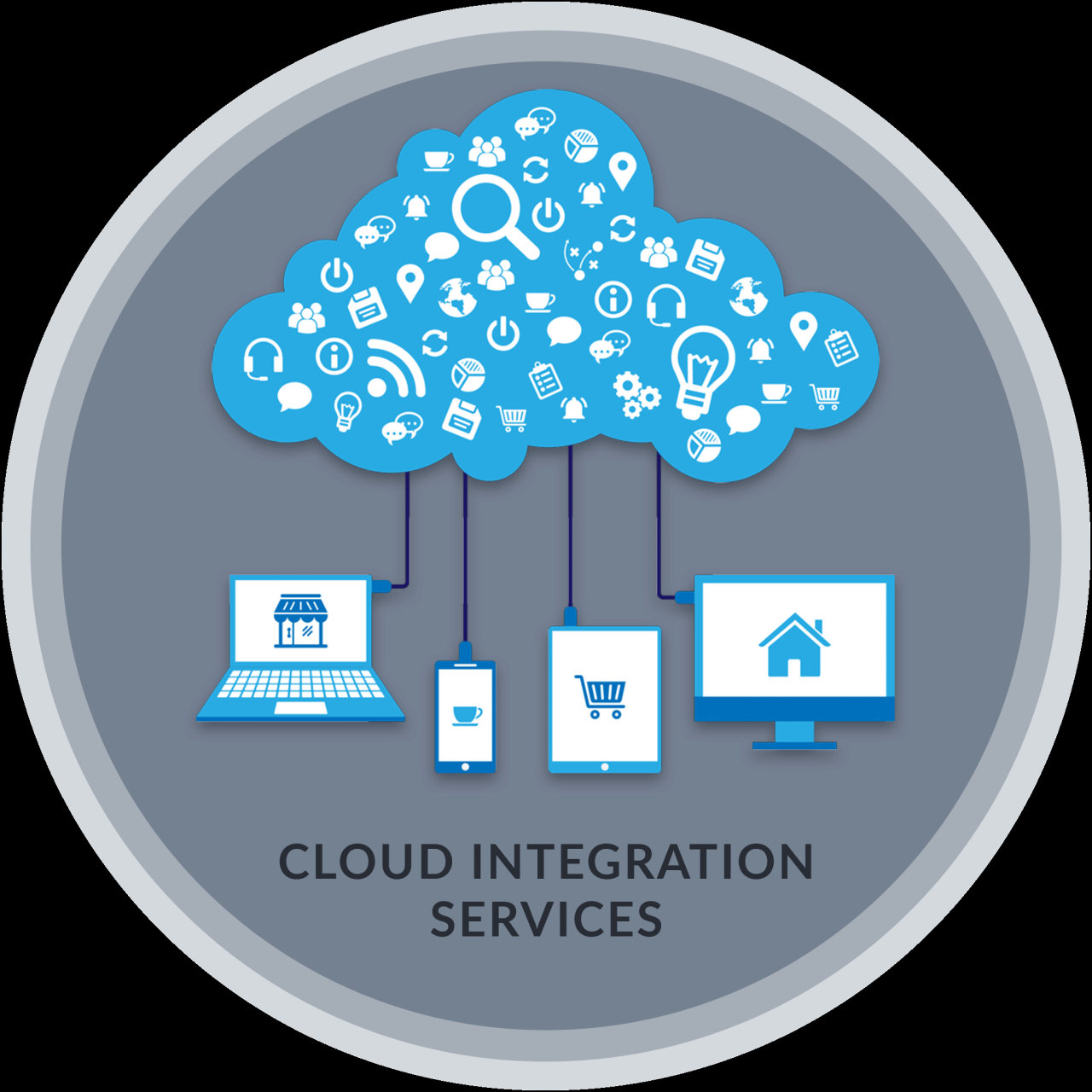
Performance is a crucial aspect of cloud networking integration services, as it directly impacts the user experience and the overall effectiveness of the applications and services running on the cloud. Several factors contribute to the performance of cloud networking integration services, including latency, throughput, and reliability.
Latency
Latency refers to the time it takes for a data packet to travel from one point to another on a network. High latency can cause delays and slowdowns in applications and services, leading to a poor user experience. To minimize latency, it is important to use a high-performance network with low latency and to tune network settings to optimize data transfer.
Throughput
Throughput refers to the amount of data that can be transferred over a network in a given amount of time. High throughput is essential for applications and services that require fast data transfer, such as video streaming and online gaming.
To increase throughput, it is important to use a network with a high bandwidth and to optimize network settings for maximum data transfer.
Reliability
Reliability refers to the ability of a network to deliver data packets without errors or disruptions. High reliability is essential for applications and services that require constant connectivity and data integrity, such as financial transactions and medical records. To ensure reliability, it is important to use a redundant network with multiple paths for data transfer and to implement error correction mechanisms.
Monitoring and Measurement
To ensure optimal performance, it is important to monitor and measure the performance of cloud networking integration services. This can be done using tools such as ping, traceroute, and performance monitoring software. These tools can provide insights into latency, throughput, and reliability, allowing network administrators to identify and address any performance issues.
Performance Testing
Performance testing is another important aspect of ensuring the performance of cloud networking integration services. Different types of performance testing, such as load testing, stress testing, and performance profiling, can be used to evaluate the performance of the network under various conditions.
This helps identify bottlenecks and areas for improvement, allowing network administrators to optimize the network for maximum performance.
Best Practices
To ensure optimal performance of cloud networking integration services, it is important to follow best practices such as using a performance management framework, implementing a performance monitoring and optimization plan, and regularly reviewing and updating network configurations. By following these best practices, network administrators can ensure that cloud networking integration services deliver the best possible performance for applications and services.
Examples
Cloud networking integration services have been successfully used to improve the performance of various applications and services. For example, a leading e-commerce company used cloud networking integration services to reduce latency and improve the speed of its website, resulting in increased customer satisfaction and sales.
Another example is a healthcare provider that used cloud networking integration services to improve the reliability of its patient records system, ensuring constant access to critical patient information.
Scalability Considerations for Cloud Networking Integration Services
Cloud networking integration services must be designed to handle varying workloads and traffic patterns. Several factors influence scalability, including:
Traffic Volume
Traffic volume refers to the amount of data flowing through the network. As more devices and applications connect to the cloud, traffic volume increases. A scalable cloud networking integration architecture can accommodate these fluctuations without compromising performance.
Number of Connections
The number of connections refers to the number of simultaneous connections established between devices and the cloud. A scalable architecture can handle a large number of connections without experiencing congestion or latency issues.
Data Transfer Rates
Data transfer rates refer to the speed at which data is transmitted over the network. Scalable cloud networking integration services can support high data transfer rates to ensure fast and efficient data transmission.
Tips for Scaling Cloud Networking Integration Services
To scale cloud networking integration services effectively, consider the following tips:
- Use a scalable cloud networking platform that can automatically adjust resources based on demand.
- Implement load balancing and failover mechanisms to distribute traffic and ensure high availability.
- Automate scaling processes to minimize manual intervention and ensure timely adjustments.
Scalable Cloud Networking Integration Architecture, Cloud networking integration services
A scalable cloud networking integration architecture involves:
- Creating a hierarchical network topology with multiple layers of networks to segregate traffic and improve scalability.
- Using multiple cloud regions and availability zones to distribute resources and enhance resilience.
- Implementing a hybrid cloud approach that combines on-premises and cloud resources to provide flexibility and scalability.
Integration Considerations for Cloud Networking Integration Services
Integrating cloud networking integration services with existing systems poses unique challenges that require careful planning and execution. Potential roadblocks include compatibility issues between different technologies, security concerns related to data protection and access control, and performance bottlenecks that can impact network performance and application availability.
To ensure a seamless integration, it’s crucial to adopt best practices for planning, testing, and deploying integrations. This involves thoroughly assessing the compatibility of the cloud networking integration services with existing systems, identifying potential security risks and implementing appropriate mitigation measures, and conducting rigorous testing to verify the functionality and performance of the integrated solution.
Leveraging Existing Infrastructure and Tools
Leveraging existing infrastructure and tools can streamline the integration process and minimize disruptions. This includes utilizing network management tools for monitoring and managing the integrated network, as well as security tools for ensuring compliance and protecting against cyber threats. Additionally, adopting cloud-native tools and technologies, such as Infrastructure as Code (IaC), can automate the deployment and management of cloud networking integration services, reducing the risk of errors and ensuring consistency.
Creating a Seamless Integration
Achieving a seamless integration between cloud networking integration services and existing systems requires careful planning and execution. This involves defining clear interfaces and protocols for data exchange, establishing automated workflows to streamline operations, and implementing mechanisms for monitoring and managing the integrated solution.
By adopting these best practices, organizations can ensure that cloud networking integration services are fully integrated with their existing systems, providing a seamless and efficient network infrastructure.
Final Conclusion

In conclusion, cloud networking integration services are an indispensable tool for businesses looking to stay ahead in the digital age. By embracing the transformative power of the cloud, organizations can unlock a wealth of benefits, including cost savings, enhanced security, improved reliability, and seamless scalability.
With the right cloud networking integration services provider, businesses can confidently navigate the ever-evolving landscape of networking and achieve their full potential.
